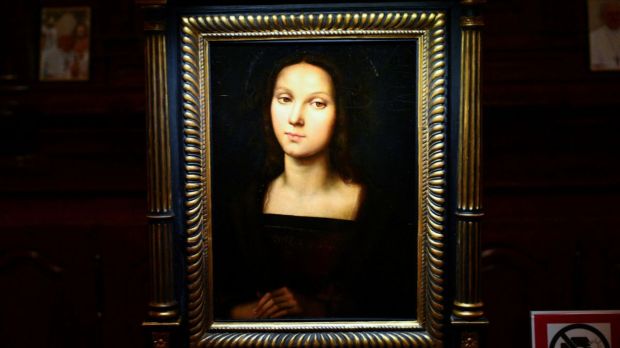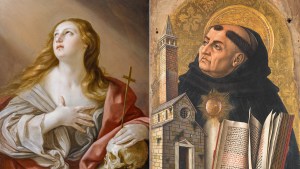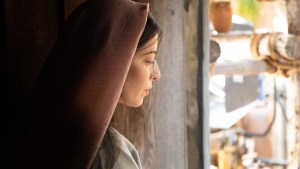It’s been declared a priceless treasure from the genius of one of the great masters of the Renaissance. Missing since the mid-17th century, a painting of Mary Magdalene attributed to none other than Raphael (Raffaello Sanzio) is on display for a month in the Basilica of Saint-Maximin-la-Sainte-Baume. The church (despite its name) is a shrine dedicated to Mary Magdalene, whose relics rest there.
A masterpiece discovered by chance
But where does this mysterious portrait come from? Two French art lovers made the unexpected discovery of this chiaroscuro painting in a London art gallery. They bought it for £30,000 (about $37,500), convinced that it was a replica of two other versions of this portrait of Mary Magdalene, one in Rome’s Villa Borghese, the other in Florence’s Palatine Gallery.
Then at the end of 2023, a team of experts on the subject concluded that it was not a copy, but an original, painted by Raphael around 1503.
“Cleaning has revealed the essential qualities of this painting, in particular the use of light, but also the finesse and delicacy of the drawing, characteristic of Raphael,” restorer Nathalie Nolde told France 3.
The model for Mary Magdalene’s features was Chiara Fancelli, wife of Raphael’s master Pierre Perugino, to whom she lent her face on numerous occasions for Madonnas. (Other experts contest the attribution.)
The painting’s owners, both Catholics, knew the Sainte-Baume shrine only by reputation, but decided to lend it to the parish.
“They felt it made sense to display it here, in this shrine dedicated to Mary Magdalene,” Fr. Florian Racine, the parish priest, explains to Aleteia. “I seized this opportunity to make our shrine better known. It’s a real privilege to have this painting here, which is a pure marvel. You’d think Mary Magdalene was alive on this canvas,” enthuses the priest.
270 parishioners look after the painting
The parish organized itself as best it could to welcome this unprecedented guest. Some 50 people quickly flocked to the basilica’s sacristy to admire this rediscovered masterpiece.
“We don’t yet have the necessary count to know the exact number of visitors, but they’re numerous,” points out Fr. Racine, who has mobilized 270 parishioners to ensure the security of the painting of Mary Magdalene. Three volunteers are on duty every day, two in the sacristy and one at the church entrance. Among them are associations of the lay faithful, such as the Catholic Templars of France.

The restoration of the shrine
Measuring 18 by 13.5 inches, Raphael’s painting will be on display for a month before being returned to its owners. To contemplate it, art lovers and enthusiasts will have to pay a modest sum of three euros. The funds raised will contribute to the restoration of the shrine.
“On April 20, we inaugurated the main choir, which had been under construction for 10 years. But there’s still a lot to do: the crypt, the chapels, the tiling…” says the priest. “The benefits of the exhibition may seem insignificant, but oceans are made from drops of water,” he says with a smile.
Construction of the Basilica of Saint-Maximin began in 1295, following the discovery of relics of St. Mary Magdalene, “Apostle of the Apostles,” found under a church in the town. According to Catholic tradition, St. Mary Magdalene left Judea (then under the yoke of Herod’s persecution) for Provence, France, where she evangelized.
She then withdrew to a grotto in the Sainte-Baume forest, where she died, and it was St. Maximin, bishop of Aix-en-Provence, who buried her body in a church.



